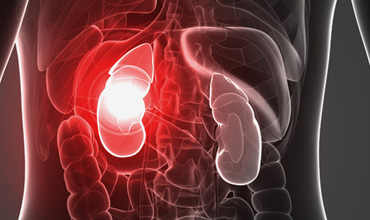Acute kidney Injury: Prevalence, Diagnosis, Causes and treatment

Abstract:
Introduction: Acute Kidney injury (AKI), is defined as an abrupt reduction in kidney function measured by a rapid decline in glomerular filtration rate resulting in the retention of metabolic waste products and dysregulation of fluid, electrolyte, and acid-base homeostasis. AKI is also defined in terms of a rise in serum creatinine concentration or by azotemia (a rise in blood urea nitrogen [BUN] concentration). The causes of acute renal disease can be related to the factors that interfere with structure and function of renal arteries, glomerular, renal tubules and urinary tracts. The current treatment for AKI is mainly supportive in nature; no therapeutic modalities to date have shown efficacy in treating the condition. Maintenance of volume homeostasis and correction of biochemical abnormalities remain the primary goals of treatment.
Methods: I undertook a systemic review different books and journals and came up with summary statement. Accordingly supporting evidence and general recommendation was generated for the future research.
Result: using the literature review the definition, causes and treatment algorithm of acute kidney injury was jotted down.
Conclusion: Acute kidney injury (formerly known as acute renal failure) is a syndrome characterised by the rapid loss of the kidney's excretory function and is typically diagnosed by the accumulation of end products of nitrogen metabolism (urea and creatinine) or decreased urine output, or both.
Keywords: Acute renal failure, creatinine, kidney, acute kidney injury, urea, blood urea nitrogen, dialysis.
References:
[1] Andreoli SP. Acute renal failure. CurrOpinPediatr 2002; 14:183.
[2] Akcan-Arikan A, Zappitelli M, Loftis LL, et al. Modified RIFLE criteria in critically ill children with acute kidney injury. Kidney Int 2007; 71:1028.
[3] Chan JC, Williams DM, Roth KS. Kidney failure in infants and children. Pediatr Rev 2002; 23:47.
[4] Chertow GM, Levy EM, Hammermeister KE, Grover F, Daley J:Independent association between acute renal failure and mortality following cardiac surgery. JAMA1998, 104:343-348).
[5] de Mendonca A, Vincent JL, Suter PM, Moreno R, Dearden NM, Antonelli M, Takala J, Sprung C, Cantraine F: Acute renal failure in the ICU: risk factors and outcome evaluation by SOFA score. Intensive Care Med2000, 26:915-921).
[6] Flynn JT. Choice of dialysis modality for management of pediatric acute renal failure. PediatrNephrol 2002; 17:61.
[9] http://www.webmd.com/a-to-z-guides/understanding-kidney-disease-.basic-information
[10] Hiraoka M, Hori C, Tsuchida S, et al. Ultrasonographic findings of acute tubulointerstitial nephritis. Am J Nephrol 1996; 16:154.
[11] Hoschek JC, Dreyer P, Dahal S, Walker PD. Rapidly progressive renal failure in childhood. Am J Kidney Dis 2002; 40:1342.
[12] http://emedicine.medscape.com/article/243492-overview#a1
[13] Harrison's Principles of Internal Medicine, 17th ed, Braunwald E, Fauci AS, Kasper DL, et al (Eds), McGraw Hill Book Company. New York 2008.
[15] Kist-van Holthe tot Echten JE, Goedvolk CA, Doornaar MB, et al. Acute renal insufficiency and renal replacement therapy after pediatric cardiopulmonary bypass surgery. PediatrCardiol 2001; 22:321)
[16] Kidney Disease: Improving Global Outcomes. Clinical practice guideline on acute kidney injury. 2011. www.kdigo.org.
[17] (Kidney Disease: Improving Global Outcomes (KDIGO) Acute Kidney Injury Work Group. KDIGO Clinical Practice Guideline for Acute Kidney Injury. Kidney Int. 2012;2:124-138
[18]
[19] Lee WS, Ooi TL. Deaths following acute diarrhoeal diseases among hospitalised infants in Kuala Lumpur. Med J Malaysia 1999; 54:303.
[20] Lee WS, Ooi TL. Deaths following acute diarrhoeal diseases among hospitalised infants in Kuala Lumpur. Med J Malaysia 1999; 54:303.
[21] Mishra J, Dent C, Tarabishi R, et al. Neutrophil gelatinase-associated lipocalin (NGAL) as a biomarker for acute renal injury after cardiac surgery. Lancet 2005; 365:1231.
[23] Mehta RL, Kellum JA, Shah SV, et al. 2007. Acute Kidney Injury Network (AKIN): report of an initiative to improve outcomes in acute kidney injury. Critical care, 11, R 31
[24] Molitoris BA, Levin A, Warnock D, et al. Improving outcomes of acute kidney injury: report of an initiative. Nat ClinPractNephrol 2007; 3 (8): 439-44
[25] Moghal NE, Brocklebank JT, Meadow SR. A review of acute renal failure in children: incidence, etiology and outcome. ClinNephrol 1998; 49:91
[26] Mehta RL, Kellum JA, Shah SV, Molitoris BA, Ronco C, Warnock DG, et al. Acute Kidney Injury Network: report of an initiative to improve outcomes in acute kidney injury. Crit Care. 2007. 11(2):R31
[27] Moghal NE, Brocklebank JT, Meadow SR. A review of acute renal failure in children: incidence, etiology and outcome. ClinNephrol 1998; 49:91.].
[28] Rossi R, Kleta R, Ehrich JH. Renal involvement in children with malignancies. PediatrNephrol 1999; 13:153.
[29] Schrier RW, Wang W, Poole B, Mitra A. Acute renal failure: definitions, diagnosis, pathogenesis, and therapy. J Clin Invest. 2004 Jul. 114(1):5-14.
[30] SVachvanichsanong P, Dissaneewate P, Lim A, McNeil E. Childhood acute renal failure: 22-year experience in a university hospital in southern Thailand. Pediatrics 2006; 118:e786
[32] The Harriet Lane Handbook, 15th, Siberry GK, Iannone R (Eds), Mosby, St. Louis 2000)
[33.] Washburn KK, Zappitelli M, Arikan AA, et al. Urinary interleukin-18 is an acute kidney injury biomarker in critically ill children. Nephrol Dial Transplant 2008; 23:566

